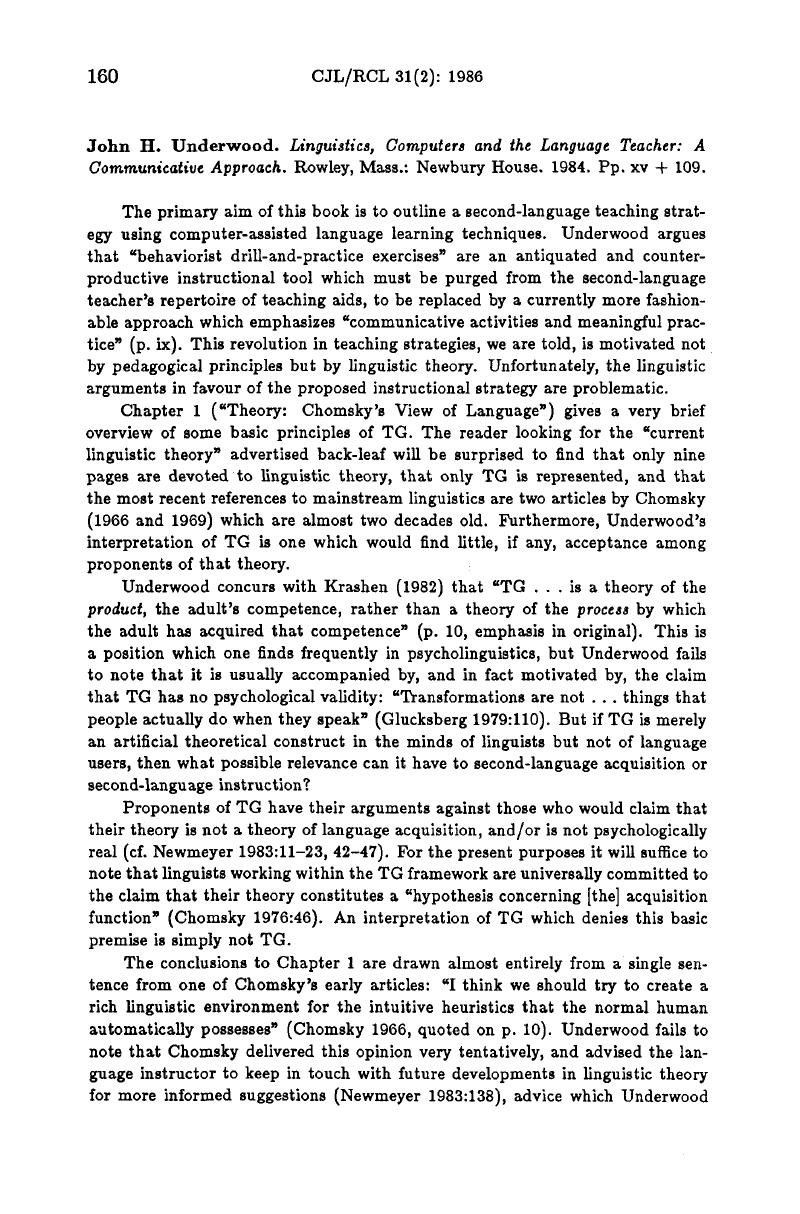No CrossRef data available.
Article contents
John H. Underwood. Linguistics, Computers and the Language Teacher: A Communicative Approach. Rowley, Mass.: Newbury House. 1984. Pp. xv + 109.
Published online by Cambridge University Press: 27 June 2016
Abstract
An abstract is not available for this content so a preview has been provided. Please use the Get access link above for information on how to access this content.

- Type
- Reviews/Comptes rendus
- Information
- Canadian Journal of Linguistics/Revue canadienne de linguistique , Volume 31 , Issue 2 , Summer 1986 , pp. 160 - 163
- Copyright
- Copyright © Canadian Linguistic Association 1986
References
Chomsky, Noam
1966
Linguistic Theory. Pp. 43–49 in Reports of the Working Committees, Northeast Conference on the Teaching of Foreign Languages. Mead, R. Jr., ed. New York: MLA Materials Centre.Google Scholar
Chomsky, Noam
1969
Some Observations on the Teaching of Language. Pedagogic Reporter
21:5–6, 13.Google Scholar
Chomsky, Noam
1976
On the Nature of Language. Pp. 46–57 in Origins and Evolution of Language and Speech. Hamad, S. R., Steklis, H. D. and Lancaster, J., eds. New York: New York Academy of Sciences.Google Scholar
Foley, William A., and Valin, Robert D. van Jr., eds. 1984
Functional Syntax and Universal Grammar. New York: Cambridge University Press.Google Scholar
Glucksberg, Sam
1979
Language and Communicative Models. Pp. 107–117 in Language Intervention from Ape to Child. Schiefelbusch, R. L. and Hollis, J. S., eds. Baltimore: University Park Press.Google Scholar
Krashen, Stephen D.
1982
Principles and Practice in Second Language Acquisition. Oxford: Pergamon Press.Google Scholar
Newmeyer, Frederick J.
1983
Grammatical Theory: Its Limits and Its Possibilities. Chicago: University of Chicago Press.Google Scholar
Rutherford, William E.
1984
Language Universals and Second Language Acquisition. Philadelphia: John Benjamins.CrossRefGoogle Scholar
Schachter, Jacquelyn
1984
A Universal Input Condition. Pp. 167–183 in Language Universals and Second Language Acquisition. Rutherford, William E., ed. Philadelphia: John Benjamins.Google Scholar


